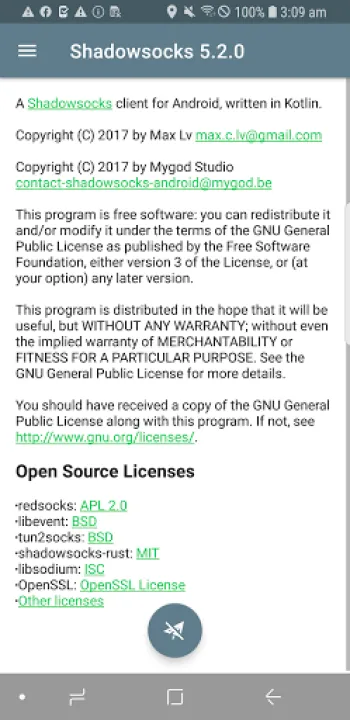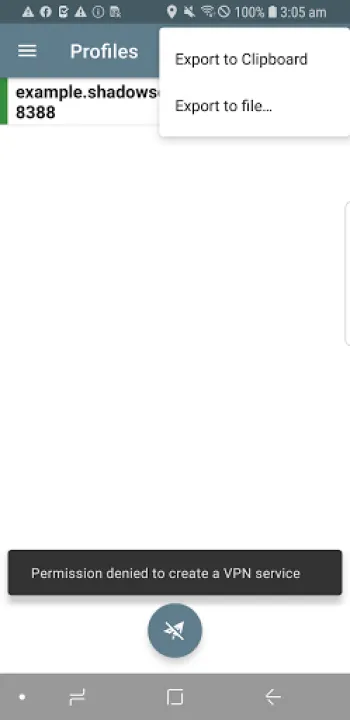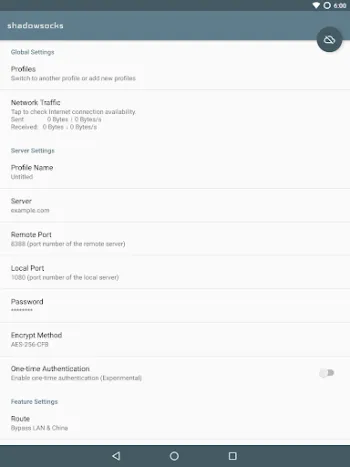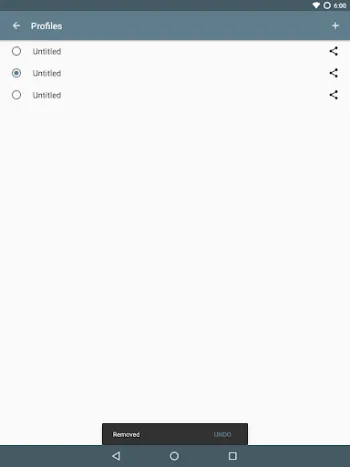Apps Home

Evolution and Importance of Android Privacy and Security
In the realm of modern technology, privacy and security have become the cornerstone of digital interactions, with mobile operating systems like Android continually evolving to meet the demands of an interconnected world. As of today, Android stands as a dominant force within the smartphone market, cherished for its versatility, open-source nature, and an extensive library of applications. Yet, this widespread adoption brings about inherent challenges related to security and privacy, necessitating guardianship over personal information and online behavior. Security threats today are more sophisticated than ever, involving a myriad of tactics from malicious software to sophisticated phishing schemes. As such, it's imperative that users leverage robust security apps like the Android Privacy & Security App to shield their personal data and safeguard against potential breaches. This app employs cutting-edge encryption methods and firewall protections, making it essential for any user aiming to keep their online presence secure. By promoting a culture of constant vigilance and proactive safeguarding measures, these tools enable users to navigate the internet—a space rife with data interceptors and potential privacy invaders—safely. Moreover, with applications such as Shadowsocks, an open-source, high-performance secured socks5 proxy, users can surf the internet privately and securely, fortifying their defenses against both targeted attacks and casual privacy infiltrations, illustrating the vital partnership between user awareness and technological innovation.
Technical Framework of Shadowsocks
Delving into the technical underpinnings of Shadowsocks offers insights into why it is heralded as an advanced tool for privacy and security on Android devices. Built with bleeding-edge techniques, its architecture is anchored in asynchronous I/O and event-driven programming, allowing for superior performance and responsiveness. Understanding this architecture equips users and developers with the knowledge to optimize their experience and troubleshoot effectively. Its low resource consumption makes it ideal even for devices that have limited processing power, a boon for users worldwide, especially in regions with older infrastructure. This lightweight footprint does not come at the expense of functionality, as Shadowsocks maintains robust privacy features through its encryption protocols. The availability of Shadowsocks on multiple platforms, ranging from PC to mobile systems, enhances its compatibility, allowing a seamless transition for users who operate across different devices. Shadowsocks is written in various programming languages, including Python, Node.js, Golang, C#, and pure C, each contributing to its flexibility and robustness. Understanding these languages is not necessary for the average user but opens doors for developers wishing to contribute to or customize the code, particularly given its status as open-source software under the GNU General Public License. This license ensures that the application’s continual improvement is a community-driven effort, motivating collaboration and innovation. Moreover, Shadowsocks’ adaptability extends to routers such as those running OpenWRT, enabling users to install the service directly on their networking hardware, thus securing their network traffic at the source.
Setting Up and Utilizing Shadowsocks
To maximize the benefits of Shadowsocks and ensure a secure browsing experience, understanding the setup process is crucial. The first step involves configuring your own server, which provides the backbone for an individual’s secure connection. This is detailed extensively by Shadowsocks’ documentation, which accommodates diverse levels of technical expertise. For those who prefer a self-customized experience, the source code is publicly available, allowing users to build their own APKs. The process includes downloading the necessary software from repositories such as GitHub, compiling the code, and tweaking parameters to meet specific needs or system requirements. This ability to tailor the application exemplifies the flexibility of open-source software platforms, fostering a user-centric approach that values individual preferences and security concerns. The deployment of Shadowsocks on Android devices involves installing the app from recognized platforms and undertaking regular updates to safeguard against emerging threats. Notably, after upgrading to version 3.x or above, users might need to uninstall and then reinstall the app, a crucial step to maintain continuity in protective measures. This iterative process of updating embodies the ever-evolving landscape of cybersecurity—where staying ahead of threats is a dynamic, ongoing endeavor. The app’s FAQ section provides additional support, guiding users through common queries and troubleshooting steps, which reiterates the importance of community and shared expertise in the tech ecosystem.
Legal and Ethical Considerations
When engaging with privacy-enhancing technologies such as Shadowsocks, discerning users must also consider the ethical and legal ramifications of their use. Software bound by the GNU General Public License ensures that its distribution remains free and modifications can be shared, fostering a spirit of transparency and openness in software development. This license underscores the ethical dimension of free and open-source software, promoting not just accessibility but accountability and community within technological innovations. However, users should remain vigilant about the legalities surrounding the deployment of privacy tools in their respective jurisdictions, as laws can vary dramatically. In some areas, the use of proxies and VPNs to bypass censorship or utilize blocked services may contravene local regulations and invite legal scrutiny. Thus, understanding a country’s digital legislation is crucial for ethical technology use, ensuring compliance while maintaining personal privacy. Moreover, contributing to Shadowsocks’ open-source development carries an ethical responsibility to respect the collaborative spirit of open-source projects and value the diversity of thought and innovation that arises therein. This can translate into a range of actions, from submitting improvements to the code to participating in community forums, each reinforcing the intertwined relationship between technology and ethics, where every action can potentially influence user trust and the technology’s future trajectory.
Future Directions and Download Options
The landscape of Android privacy and security is continuously evolving, with future developments poised to further enhance the functionality and security offered by tools like Shadowsocks. Anticipated advancements may include more sophisticated encryption algorithms that can withstand upcoming security threats and improved user interfaces that facilitate even greater ease of use. Developers are also considering integrating advanced artificial intelligence to predict and preempt potential security breaches, as well as machine learning mechanisms to learn from data traffic patterns, thereby augmenting the system's defensive capabilities. In the context of growing metadata collection and data analytics, tools that protect user privacy are becoming integral to countering intrusive data practices seen across myriad digital services. Thus, the collaborative efforts in updating Shadowsocks are pivotal to its advancement, ensuring it remains a leading tool for maintaining privacy in an increasingly surveillant digital ecosystem. For users wishing to enhance their Android device’s security today, Shadowsocks is readily accessible on the Google Play Store, where it can be downloaded and installed with ease. This ensures that users worldwide can secure their internet activities with minimal barriers. Users can Download for Android, creating an immediate pathway to enhanced security and privacy. Such accessibility exemplifies the commitment to universal privacy rights, making it a standard, rather than a privilege, in the digital age.
Share Your Opinion
Your Email Will Not Be Published.
All Rights Reserved © Apps Home 2025






























Môrsíne
To users who are complaining about slow speed, this app is only a CLIENT for a PROTOCOL. which means, this app DOES NOT provide services on itself ...
Tor K
Thanks for this application. It is great when using Internet behind corporate firewalls. However, recently the VPN mode stopped working for Interne...
A Google user
[Edited Review] Works perfectly and its flow of data is much faster than OpenVPN [Original Review] Doesn't work on any of my devices. Switched to P...
Mahmood Ramzani
there is a bug in the app that cause blocking internet access after some changes in network state.after turning off the app and turning it on again...
Barry Chen
perhaps the app does have some minor issues on connection establishment, but as far as I can think of, the app provides client services, it does no...